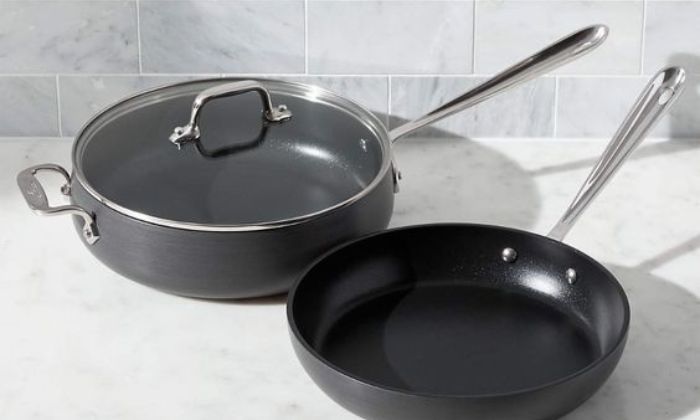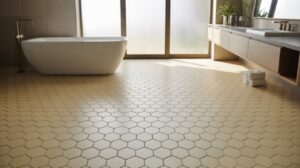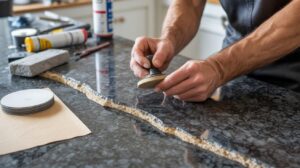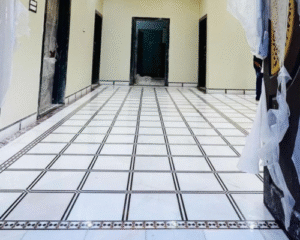Can You Put Hot Pots on Granite?
Granite countertops are a popular choice in many kitchens because of their beauty, durability, and resistance to stains. However, when it comes to placing hot pots on granite, many homeowners wonder whether this natural stone can withstand the heat without getting damaged. So, can you put hot pots on granite? Let’s explore this common concern and find out the best practices to keep your granite countertops safe and looking their best.

Table of Contents
ToggleUnderstanding Granite’s Heat Resistance
Granite is an igneous rock, formed from the slow crystallization of magma beneath the Earth’s surface. It is made up of minerals like quartz, feldspar, and mica, which contribute to its strength and heat resistance. One of the reasons granite is so popular in kitchens is because it is naturally resistant to heat compared to other countertop materials.
This heat resistance comes from granite’s ability to withstand high temperatures without warping or melting. Granite countertops can typically handle the heat from a hot pan or a pot without showing signs of immediate damage. However, the level of heat that granite can safely endure varies, and certain precautions should still be taken to avoid potential harm.
What Happens When You Place Hot Pots on Granite?
When you place a hot pan or pot on granite, the heat is transferred from the hot surface of the pan to the cooler granite surface. Granite is capable of absorbing this heat up to a certain point without any visible damage. However, placing extremely hot items directly on the countertop may cause some issues over time.
While granite is heat-resistant, extreme temperatures, especially those above 500 degrees Fahrenheit, can cause problems. At these high temperatures, the surface may start to show signs of thermal stress, which can lead to cracking or discoloration. The intensity of the heat, combined with rapid cooling (for example, putting a hot pan on a cold countertop), can create a significant risk of thermal shock.
The Risk of Thermal Shock
Thermal shock occurs when a material experiences a rapid change in temperature, which causes it to expand or contract unevenly. For granite, this could mean cracking, chipping, or breaking under intense heat. This is especially true when putting hot pans or hot pots directly on the surface without proper heat protection.
Granite countertops are sturdy, but extreme heat and sudden temperature fluctuations can stress the stone, leading to cracks. Even if granite doesn’t crack immediately, repeated exposure to high heat without protection can weaken the material over time. Therefore, while it’s possible to put hot pots on granite, using a hot pad or trivet is always recommended to reduce the risk of damage.
Best Practices to Protect Granite from Heat
If you’re wondering how to protect your granite countertops from extreme heat, there are a few simple steps you can take. While granite is naturally resistant to heat, it’s still important to follow best practices to maintain its integrity over the long term.
1. Use Trivets or Hot Pads: Always place hot pans, pots, or baking sheets on trivets or heat-resistant pads. These act as a buffer between the intense heat of the cookware and your granite countertop.
2. Avoid Direct Contact with Hot Items: Even though granite can handle high temperatures, it’s a good idea to avoid placing hot items directly on the countertop. Use cutting boards or heat-resistant mats to protect the surface.
3. Be Mindful of High Temperatures: Although granite can resist heat from a hot pan on granite, there are limits to its tolerance. Avoid placing items that have been exposed to high heat (above 500°F) directly on the surface. This includes pots fresh from the oven or stovetop.
4. Use Coasters for Hot Mugs: In addition to pots and pans, avoid placing hot beverages, like coffee mugs, directly on your granite countertop. Use coasters to shield the surface from heat.
The Role of Sealing in Heat Protection
Granite countertops are naturally porous, so sealing is an important step to ensure the stone remains protected from stains and other damage. However, sealing does not necessarily increase the granite’s resistance to heat. A sealed granite countertop will help protect against spills, oils, and liquids, but it will not provide extra protection against extreme temperatures.
Regularly sealing your granite countertops will help preserve their appearance, but it should not be relied upon for protection against high temperatures. The key to avoiding damage from hot pots and pans is proper care and use of heat-resistant barriers.
Common Myths About Granite and Heat
There are many misconceptions about granite and its ability to handle heat. Let’s take a look at some of the most common myths:
1. Granite Can Withstand Any Heat: While granite is durable and heat-resistant, it’s not impervious to extreme heat. Placing hot pots on granite repeatedly without protection can lead to thermal shock or permanent damage over time.
2. Granite Doesn’t Need Protection from Hot Items: Some people believe that granite is so durable that it can handle the hottest cookware without any issue. This is not true. Extreme temperatures can cause damage, especially if a hot pan or pot is placed directly on the granite.
3. Sealing Granite Protects It from Heat: As mentioned earlier, sealing granite helps protect against stains, but it doesn’t provide extra protection against heat. Always use a hot pad or trivet when placing hot items on the countertop.
Hot Pots Got You Worried? SF Marble & Granite Keeps Your Granite Gorgeous!
At SF Marble & Granite Inc., we’re passionate about keeping your granite looking its best. Whether you need Granite Installation, Repair and Fabrication in Lowell because of heat damage or just want to keep your surfaces in top shape, we’re here to help. Think of us as your partners in beautiful, long-lasting granite!
Conclusion
So, can you put hot pots on granite? While granite is heat-resistant, it’s important to take precautions when handling hot items. To protect your countertop from heat damage, always use trivets or hot pads when placing hot pots and pans on the surface. By following these best practices, you can ensure your granite countertops remain beautiful and durable for years to come.
FAQs
Can granite withstand heat?
Yes, granite is naturally resistant to heat, but it can still be damaged by extreme temperatures above 500°F. It is always best to use heat-resistant pads or trivets to protect your granite countertop.
Does heat damage granite?
Granite is heat-resistant to an extent, but intense heat can cause thermal shock or cracks. Using a hot pad or trivet is recommended to avoid potential damage.
At what temperature does granite crack?
Granite can crack when exposed to sudden temperature changes or extreme heat (around 500°F or higher). Always protect your granite with a heat-resistant barrier.
Does granite crack easily?
Granite is a durable stone, but it can crack under extreme conditions like sudden temperature fluctuations or intense heat. Regular care and proper use can help prevent damage.
How to protect a countertop from a hot pan?
The best way to protect your granite countertop from a hot pan on granite is to use trivets, hot pads, or cutting boards. These provide a protective layer between the hot item and the surface of the countertop.







